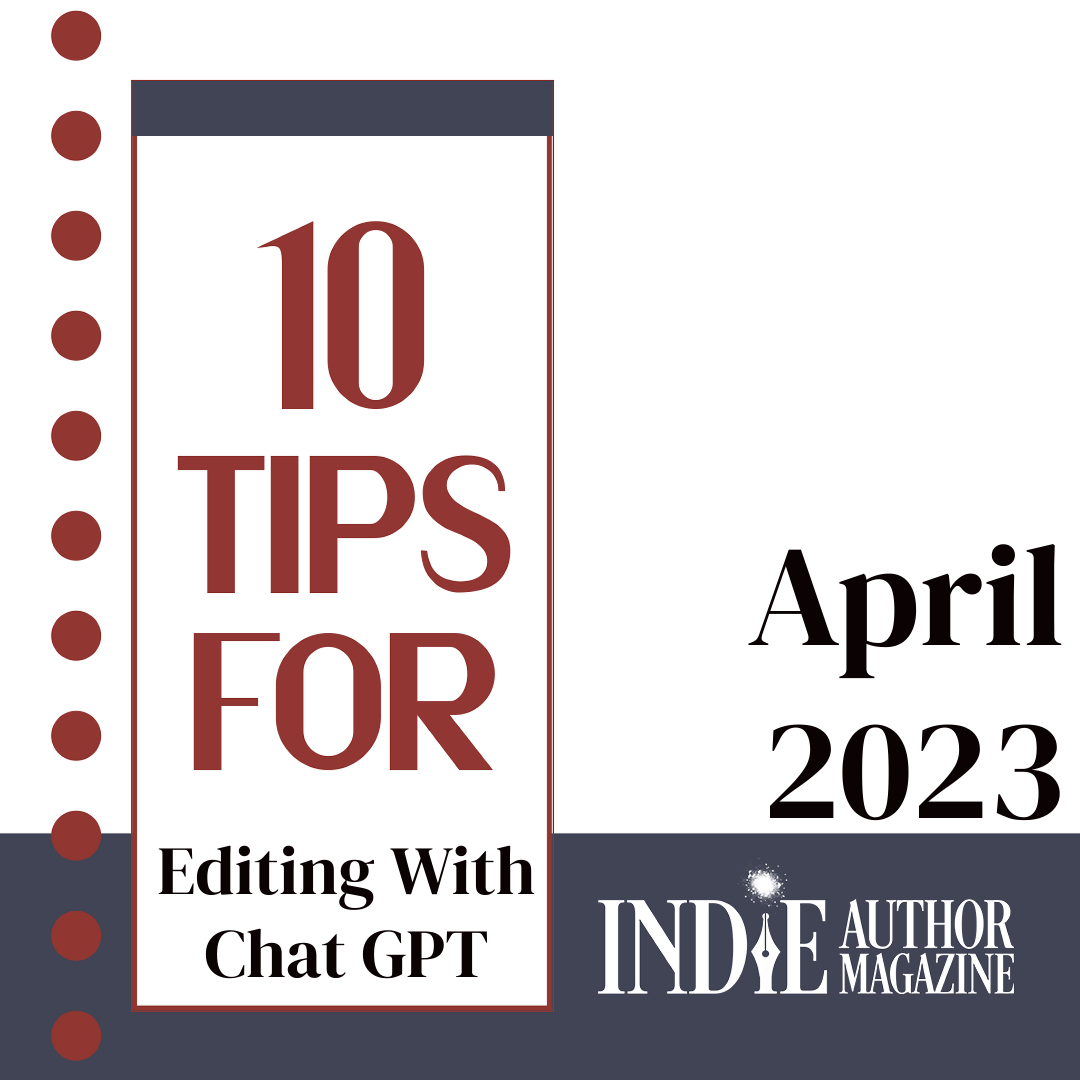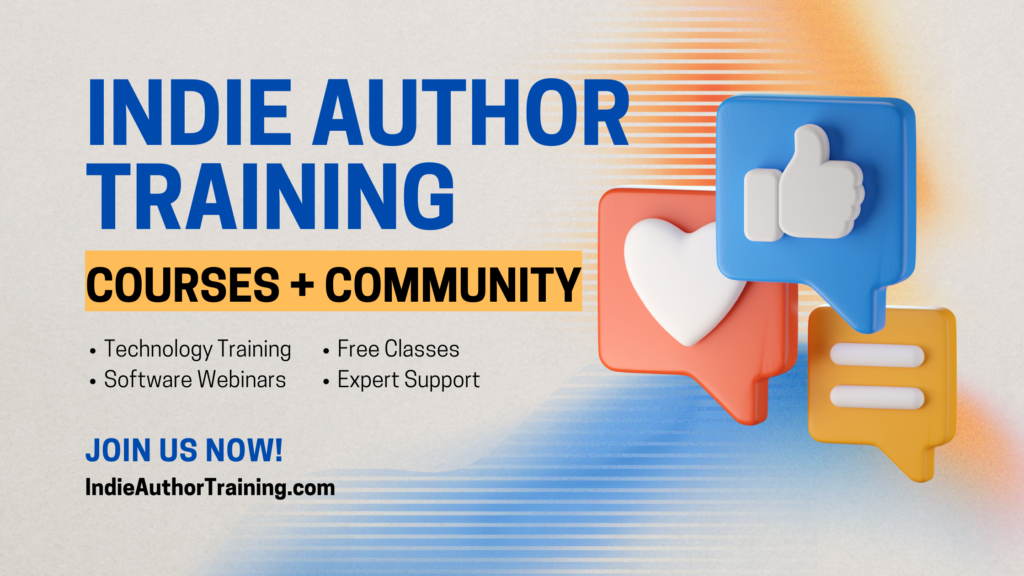Generative AI text and art programs may be receiving the most attention right now, but they aren’t the only ways authors can use AI technology.
Released in 2020, OpenAI’s GPT-3 large language model made possible many of the text AI services that authors use today, such as Jasper.ai and Sudowrite. GPT-3 was also the language model on which the original ChatGPT was built. And GPT-4, announced March 14, only four months after the release of the associated chatbot, offers several additional features and capabilities of its own. When you use ChatGPT, you’re using a modified, more powerful version of GPT, along with additional knowledge bases. But while GPT’s main talent is generating text, it can also edit text you provide.
Generative AI programs are typically coded to avoid “copycat” compositions, according to Forbes, and OpenAI argues accidentally infringing on copyright or plagiarizing existing works with works generated by its programs is “an unlikely outcome,” according to a February report by the Congressional Research Service; still, for those authors who may be wary, AI editing offers a reassuringly safe use case for the programs. You won’t be creating new works, only using it to catch errors in your writing.
Technology is ever-evolving, and AI’s capabilities as an editor are likely to improve in the near future. But for now, we’ve gathered ten ways to use OpenAI’s GPT models to create cleaner manuscripts. You can use the free version of ChatGPT to test the use cases in this article.
1. Think of AI Editing as Another Line of Defense
AI technology is not a replacement for a human editor. Think of it as another tool you can use alongside other tools like Grammarly and ProWritingAid.
However, the technology that powers GPT differs from Grammarly and ProWritingAid. It catches spelling and grammar errors that the aforementioned grammar checkers cannot. When used in combination with them, GPT can help authors reduce the number of errors in their work.
Pro Tip: Use GPT on your text before using grammar checkers like Grammarly and ProWritingAid. GPT catches many of the same errors, so using it first will reduce the time you spend in your preferred grammar checker.
2. Catch Spelling and Grammar Errors (Typos Only)
Using ChatGPT, use the prompt “Edit this text for typos only” followed by the text you want to edit. GPT will act as a proofreader—nothing more, nothing less.
Examples of errors GPT can find include
- dropped articles,
- frequently confused homonyms and homophones,
- proper noun mistakes, and
- unusual grammar errors.
GPT-3 users could edit approximately three thousand words at a time, and GPT-4’s two models will expand this to about five thousand words on one hand and twenty-two thousand words on the other. This is arguably one of the most powerful ways to use GPT for editing, given the program’s accuracy.
3. Catch Spelling and Grammar Errors (with Rewrites)
You can also use GPT to make more substantive sentence edits that make it function more like a copyeditor. If you use the prompt “Edit this text,” the model will recommend sentence rewrites based on commonly accepted grammar rules. It will check your sentences for clarity, consistency, and flow.
This prompt may interfere with your author’s voice and will potentially recommend extensive sentence rewrites, but it may be a viable option for writers who need additional assistance.
4. Fix Repetitive Words or Phrases
The prompt “Fix repetitive words or phrases in this text” will make the model focus on words you overuse and replace them with alternatives.
As with tip 3, this prompt may also recommend extensive sentence rewrites, in addition to words that may not match your author voice, so tread cautiously.
5. Fix Continuity Errors
Continuity is a critical aspect of editing. Readers will find it distracting if a character sits down twice within the same conversation or suddenly has a wardrobe change without warning. GPT can provide limited assistance with the prompt “Find continuity errors.” The model will report potential issues, such as a character sitting down multiple times.
The only limitation with this feature is that you can only load up to approximately three thousand words into the model at a time, and it doesn’t remember previous requests. Therefore, it can’t help you fix continuity errors in your entire novel, but it can analyze any sections you might be concerned about.
6. Fact-Check Your Text
GPT-3 was trained on 175 billion parameters, including much of the internet. You can test its knowledge with the prompt “Fact-check this text.” Use GPT’s fact-checking capabilities with chapters set in areas of the world you have researched but have never visited personally or sections featuring a character in a profession you are unfamiliar with. You will still need to fact-check anything that GPT recommends, but this can help you do deeper research and write more realistic fiction or more nuanced nonfiction.
Pro Tip: You can also ask more nuanced questions with fact-checking. I wrote a series about a character who is a rat shifter. I selected a chapter where the hero is in his rat form, and I used the prompt, “How would a rodent biologist respond to the scientific accuracy of how rats are portrayed in this scene?” GPT-3’s response was that a biologist might take issue with me describing a rat’s vision as “legally blind,” and it scientifically explained why, giving me a lesson in rodent optical biology.
Note that if GPT doesn’t know the answer to a question, it won’t say “I don’t know.” It will give you a creative answer that could be false. This is why fact-checking GPT’s corrections on your own is still critically important. Even so, using this capability can help you explore avenues that you might not have otherwise considered.
7. Use Microsoft Word’s Compare Feature
A limitation to using GPT for editing is that it will fix your text, but it won’t tell you what it fixed. Thankfully, another common platform can provide a workaround.
To get a report of how your text changed, paste your original text into a Microsoft Word document, then paste GPT’s revised text into a second Word document. Use Word’s Compare feature to reveal all of GPT’s revisions as tracked changes.
Google Docs and OpenOffice also have comparison functionality that can similarly highlight AI’s changes.
8. Spot-Check the First 10 Percent of Your Book
Using AI for editing right now is cumbersome, but if it’s too much work to paste your novel into ChatGPT chunks at a time, then consider doing it for the first 10 percent of your novel, or the first 20 percent if you have the time. According to Amazon Kindle Direct Publishing (KDP), readers can browse the first 10 percent of an e-book, and 20 percent of a hardcover, when they click the “Look Inside” feature on an Amazon sales page. Google Play Books also makes the first 20 percent of e-books previewable by default.
GPT’s proofreading, continuity checking, and fact-checking skills could help you spot potential problems in those first critical pages of your book, and subsequently increase your chances of selling more books.
9. Explore What Is Possible
Writers with Python skills can develop applications that communicate with the GPT application programming interface (API) to create more convenient ways of using the model.
For example, one could create an application that allows a writer to upload their existing Word document to the API instead of having to paste chunks of text into ChatGPT. The API could edit the entire document, allowing the writer to circumvent the three-thousand-word limit and much of the manual work required. The writer would just need to pay for the API costs.
The API is cost-effective and based on usage. The most powerful OpenAI GPT-3 model is Davinci, which costs $0.02 per one thousand tokens, or approximately seven hundred fifty words. To learn more about the token system, visit https://help.openai.com and click on “OpenAI API.” OpenAI charges to read the text and again to produce revised text, so a seven-hundred-fifty-word writing session would cost around $0.04. A fifty-thousand-word novel would cost the writer approximately $2.66.
Given that generative AI tools like Sudowrite and MidJourney both start at $10 per month (with a usage cap), editing is one of the cheapest ways for savvy writers and developers to use AI right now.
10. Keep an Eye on the Technology, and Keep Experimenting
AI editing is in its infancy and will continue to improve. As more people discover its capabilities, we may see dedicated apps that will make it more convenient to use in a variety of ways. Already, when used strategically, it can assist us in creating cleaner manuscripts. In time, it may even become a staple of the modern editor’s toolbox too.For more information on OpenAI’s developments on GPT, visit its blog at https://openai.com/blog or subscribe to its feed in your favorite RSS reader. Any announcements about new GPT models will be made there first.






